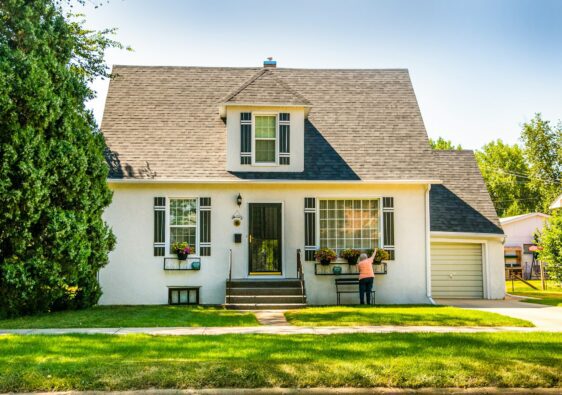Table of Contents
- What Are ADUs?
- Key Benefits of ADUs
- Financial Potential of ADUs
- Environmental Impact of ADUs
- Common Challenges and Solutions
- Future of ADUs
- Regulations and Zoning Laws
- Tips for ADU Construction
What Are ADUs?
ADUs, or accessory dwelling units, are auxiliary housing units built on a primary residence’s land. Also known as granny flats or in-law suites, they provide homeowners needing additional living space with a flexible and affordable option. Whether used for family members or rented out for extra income, ADU construction Phoenix is becoming increasingly popular in urban and suburban areas. By utilizing existing land and resources, homeowners can maximize their property’s potential without needing expansive new developments.
Key Benefits of ADUs
- Flexible Housing Options: ADUs provide homeowners with additional living space that can be used for aging parents, adult children, or even as a home office. Their flexibility makes them suitable for their flexible styles and needs. For example, young adults can have a private living space while still being close to the family home, and elderly parents can enjoy the comfort of living nearby without losing their independence.
- Cost-Effective: Compared to traditional homes, ADUs are generally more affordable to construct and maintain. This affordability makes them attractive for homeowners and renters seeking budget-friendly housing solutions. Constructing an ADU often requires fewer materials and less labor, translating into lower overall costs. Their smaller size typically results in lower utility bills and maintenance expenses.
Financial Potential of ADUs
Investing in an ADU can also be a financially sound decision. Many homeowners are seeing a significant return on their investment by renting out their ADUs. The demand for affordable and flexible housing solutions is increasing, making ADUs a valuable asset in the real estate market. Renters often pay a premium for well-designed ADUs due to their privacy, convenience, and the charm of living in a standalone unit. This rental income can help offset the initial construction costs and provide homeowners with a steady source of extra revenue.
Environmental Impact of ADUs
ADUs also contribute positively to the environment. They promote sustainable urban development by utilizing existing land more efficiently. By housing more people on the same plot, ADUs reduce the need for new land development, thereby preserving green spaces. Furthermore, ADUs can be designed with energy-efficient materials and systems, helping to lower the carbon footprint. These sustainable practices make ADUs a responsible choice for environmentally-conscious homeowners. For example, incorporating solar panels, high-efficiency HVAC systems, and sustainable building materials can significantly reduce the environmental impact of these units.
Common Challenges and Solutions
Zoning Regulations
One of the primary challenges in constructing an ADU is navigating zoning regulations, which can vary significantly by location. Many cities have strict laws and standards that need to be met. However, recent legislative changes in many areas make it easier for homeowners to build ADUs. It is crucial to stay informed about local zoning laws to ensure compliance and avoid unnecessary delays. Working with local planners and legal experts can help homeowners navigate these regulations effectively.
Financing
Securing financing for an ADU construction project can be another hurdle. Traditional mortgages may not cover the costs associated with building an ADU. However, some financial institutions offer specialized loans explicitly designed for ADU construction. Exploring these options and finding a loan that fits your needs can make financing smoother. Additionally, homeowners might consider home equity or personal loans as alternative financing options. Proper planning and budgeting are crucial to ensuring a successful ADU project.
Future of ADUs
The trend towards smaller and more sustainable living spaces is rising, and ADUs are at the forefront of this movement. With the increasing need for flexible housing solutions, the popularity of ADUs is expected to grow steadily in the coming years. Experts say ADUs will be crucial in addressing housing shortages, especially in densely populated urban areas. As cities become more crowded and housing prices rise, ADUs offer a viable solution for increasing the housing supply without significant land use changes.
Regulations and Zoning Laws
Planning an ADU requires a thorough understanding of zoning laws and local regulations. The location, design, and size of the unit are just a few aspects of the construction process that these regulations may impact. Homeowners should confer with professionals and local authorities to ensure their ADU plans adhere to all applicable codes and standards. Proactively comprehending and complying with these regulations can avert future complications and guarantee the project’s triumph. Additionally, homeowners can benefit from new opportunities and incentives for ADU construction by keeping up with updates and changes in local laws.
Tips for ADU Construction
- Work with experienced contractors familiar with the nuances of ADU construction to ensure high-quality results and compliance with local codes.
- Consider energy-efficient designs and materials to create a sustainable living space that saves on utility costs in the long run. Utilizing renewable energy sources and implementing green building practices can enhance the overall sustainability of the ADU.
- Stay informed about local zoning regulations and explore financing options designed explicitly for ADU projects to streamline the construction process. Proper research and planning can help overcome potential challenges and make the construction process smoother and more efficient.



